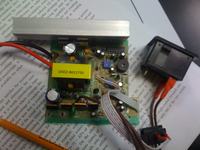binaryninja
Member level 3

I am working on a DC-AC inverter using a H-bridge. I am trying to select the mosfets I will be using for the hi and lo side switches. Looking for these I have come across "power switches". Considering I am new to smps design these were off my radar.
I'm just looking for some clarification on what these are usually used for and why. They appear to just be power mosfets with built in protections and extra pins (that I'm not sure how to use). Here's an example: **broken link removed**
Please provide some insight or explain if you have experience or know. Thanks!
I'm just looking for some clarification on what these are usually used for and why. They appear to just be power mosfets with built in protections and extra pins (that I'm not sure how to use). Here's an example: **broken link removed**
Please provide some insight or explain if you have experience or know. Thanks!








